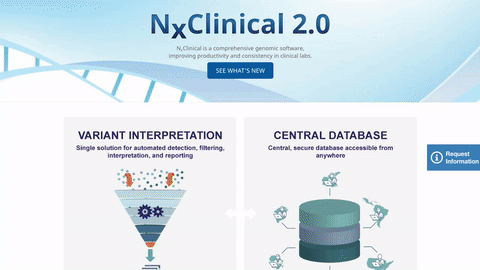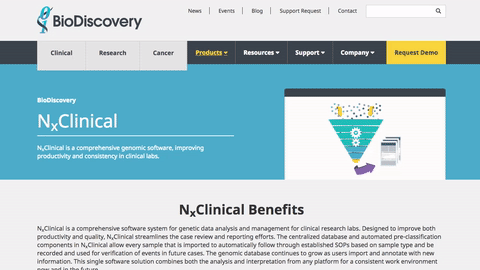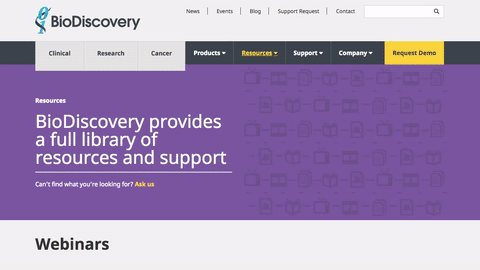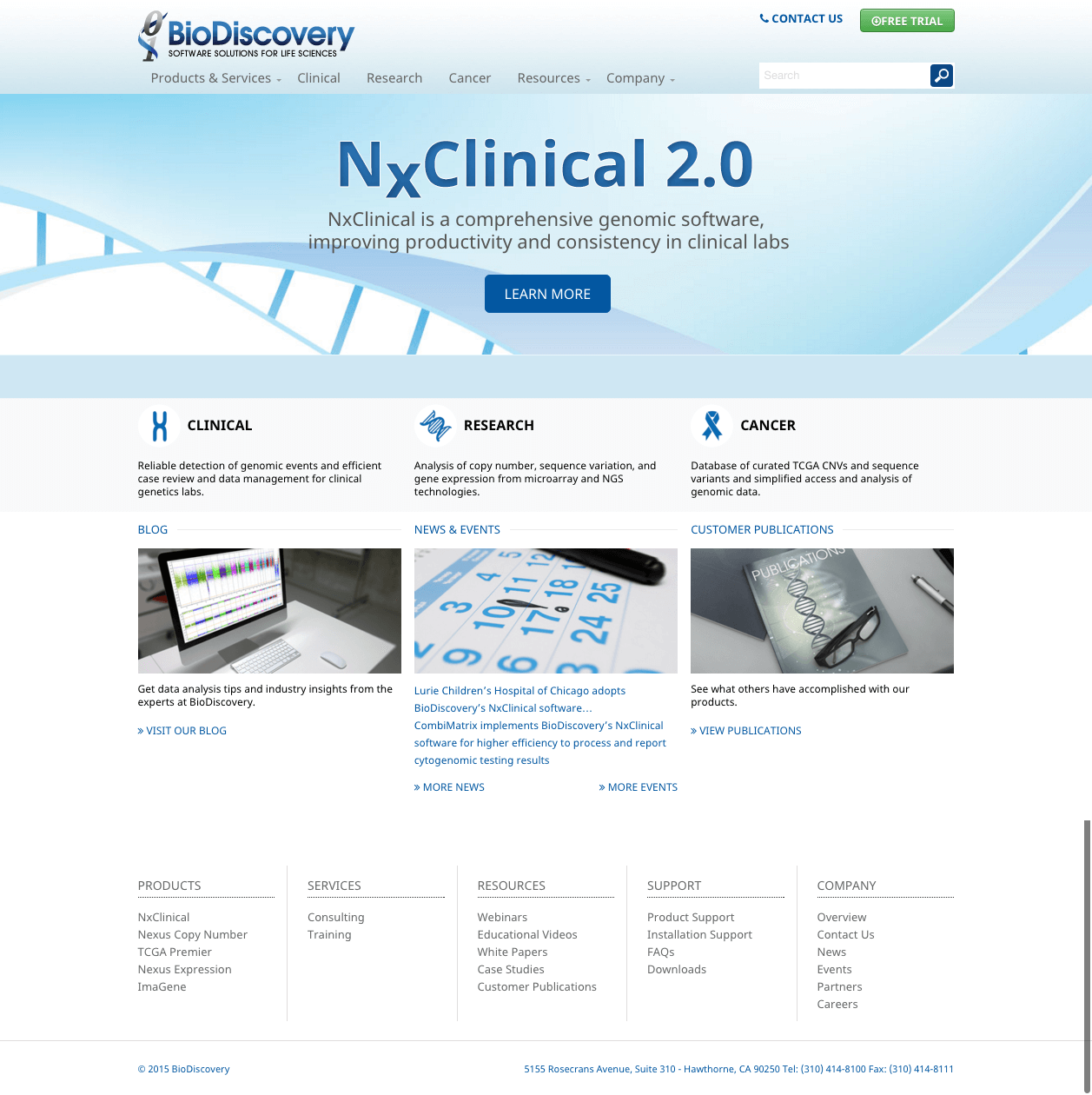Re-brand, Re-build, Re-engage
Redesigning an interactive, personalized, optimized web experience with the help of HubSpot
BioDiscovery Inc., a leader in innovative genomic data analysis software solutions for life science research and clinical applications, prides themselves in offering the highest quality and most advanced genomic software. They recognized the need to redesign their website and explained to SmartAcre® that they wanted a site reflective of their innovative company culture.


In addition to promoting their brand in a new, optimized way, BioDiscovery wanted to add a level of personalization throughout their website to promote visitor interaction, conversion, and retention. In addition to engaging with existing leads, BioDiscovery needed to increase organic web traffic using inbound best practices, with a goal to also increase the monthly webinar registration average.
SmartAcre worked with BioDiscovery to achieve this goal. Launched in January 2016, the new website improved BioDiscovery’s customer experience by making it easier to navigate through information. The new design clearly showcases products and benefits for clinical, research, and cancer markets, offering deeper content about the software and offers that align to the buyer’s journey.
What challenges did the client face before SmartAcre?
Over time, BioDiscovery’s website had been edited and rewritten. During these edits, the site navigation changed causing a poor user experience. Links and content did not match what the visitor clicked, such as a link to a video that actually took you to a “Contact Us” page.
On top of navigational problems, there were security issues that created a roadblock for adding new blog content. Any digital marketer would tell you how important fresh content is and that a blog is the best place to start. Unfortunately, BioDiscovery was missing a huge opportunity to gain inbound leads using this tactic.
Finally, the web forms were from various third-party services and all resource content was hosted directly through WordPress with no library or filtering capability. Improving this was a priority to enable a better user experience and to both track and increase conversions.
Where did we start?
SmartAcre started the redesign by determining the requirements for the re-branding. Our design team worked closely with BioDiscovery to reinvent their logo, color scheme, and overall look and feel of the site. We also started implementing capabilities in HubSpot to bridge gaps in functionality, like using HubSpot landing pages and forms to host webinar registration instead of relying on WordPress and GotoWebinar.
Throughout the design process, we wrote and rewrote content keeping SEO best practices in mind. As we reorganized the site structure, we decided to host BioDiscovery’s resources – white papers, case studies, education videos, webinar recordings – in HubSpot to better organize the content. All forms were also moved to HubSpot, like the “Contact Us” form and forms used to download content. Finally, a new blog was created to be a feature focus on the new site.
How did we accomplish the design, experience, and traffic goals?

Product specific pages, like this page on NxClinical, feature content enriched with SEO target keywords and phrases (as per inbound marketing best practices), a demo request form hosted in HubSpot located in a better location on the product page, and related resources also hosted in HubSpot. With HubSpot tracking code added to all pages on the site, complete web behavior and history is available for visitors and leads.
The homepage and other areas of the site proudly boast BioDiscovery’s new blog. Each blog post is enhanced for SEO best practices using HubSpot’s in-tool optimization feature. Many blog posts also contain calls-to-action (CTA) – some even containing dynamic CTA’s based on the behavior or demographic information of the visitor.
All events are now hosted through blog posts in HubSpot and some include forms to register for a personalized demo or in-person meeting. This includes a notification that is sent to the relevant BioDiscovery team member. The ease of this process not only benefits the user, but also the team member facilitating the event.
An additional requirement was to enable a better webinar registration process for leads, as well as make webinars easier to find both organically and natively within the site. With a featured section on the homepage promoting upcoming webinars and the use of HubSpot landing pages, BioDiscovery saw an increase in webinar registrants by 300%. Using HubSpot forms and landing pages in place of GotoWebinar forms and pages increased transparency into the registrants and attendees. Regular webinar registrants experienced consistent registration pages with dynamic content recognizing past involvement and showing customized messaging thanking them for returning. The webinar follow-up process was also customized through email messaging, ultimately pointing leads to a HubSpot landing page with a recording of the webinar and a dynamic CTA to request a demo.
How do we measure success?
The redesign resulted in:
- An increase in overall website traffic of 30%
- An increase in overall pageviews of 46%
- An increase in overall pages per session of 12.5%
- An improvement in page load time of 32.82%
- Increase in webinar engagement by 300% from April 2015 to February 2016



